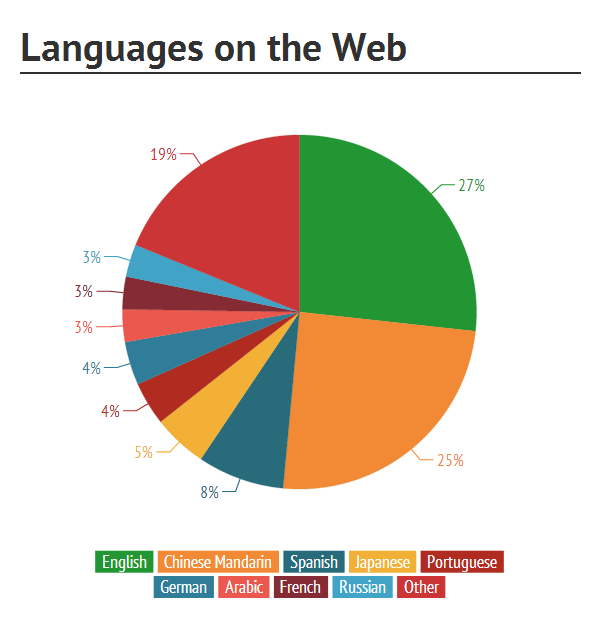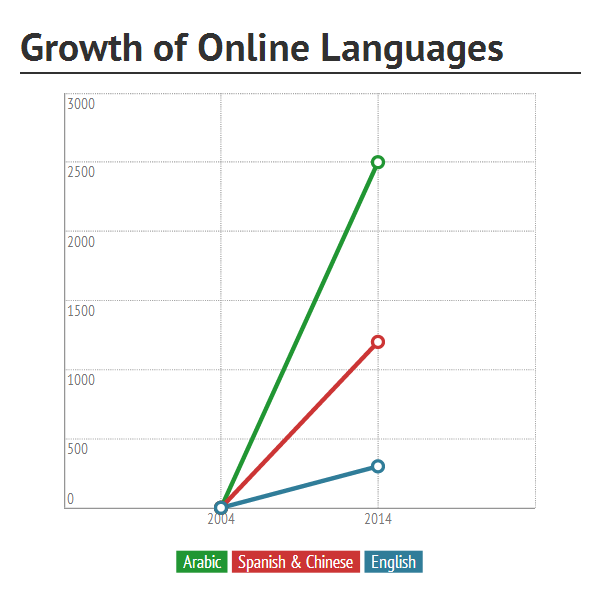
Targeting the right people is an essential component to an online strategy. Is your business missing out by ignoring web language diversity?
Targeting the right people is an essential component to any online strategy. Missing out on a very lucrative market, however, is not. Is your business ignoring potential customers, especially when looking at web language diversity? To find out, take a moment and answer this question:
Are you sharing your online presence in languages other than English?
If the answer is no, you can have some comfort in knowing that you’re targeting the largest population of internet users…for now.
Web Language Diversity
Unfortunately, you’re denying 73% of all people on the web the opportunity to consider your product, your service or your brand. That’s 1,207,491,826 people that will never know how great you are!
You’re probably thinking that although a new-found reach to 1.2 billion people could significantly improve sales, this quarter’s budget just won’t give room for translation services to the world’s 6912 languages.
But what about just one other language?

Offering your online content to both English and Mandarin Chinese speakers would increase your possible reach to 52% of all online users.
What if we throw Spanish into the mix? That’s 60% of online users and 674,934,000 more people than you are able to reach to date.
Long-term Forecast for Language Use on the Web
The road doesn’t end here. The proportion of non-English speakers making their way onto the web is growing exponentially.
In the last ten years, the number of Arabic speakers using the internet has increased by 2500%! Spanish and Chinese web pages increased by 1200%….and English, well, let’s just say it didn’t triple.
Internet population and the languages used on the web is changing. And it is changing fast.
Market of Opportunity
Maybe the most compelling reason to create content in other languages is simply because your competitors aren’t.

“95 percent of Chinese online consumers indicate greater comfort level with websites in their language; only one percent of US-based online retailers offer sites specific to China.”
—Forrester Research, Translation and Localization of Retail Web Sites, 2009
To put this into perspective, creating content in Chinese gives your company the chance to reach an additional 25% of the world’s online population… an opportunity that 99% of North American businesses are missing out on.
Do Your Homework
This post is meant to highlight the growing online markets that many businesses are missing. That being said, any decision to expand into a new market demographic requires adequate research.
Simply translating the text on your website will probably not be enough to convince users to make a purchase.
Carefully examining the needs and wants, cultural differences and lifestyle choices of each new market is imperative. We encourage you to look at the market opportunities in other languages and do some research to see where there is an opportunity to expand your global reach.
Interested in learning more about localization?
Reach out to us with your questions!


